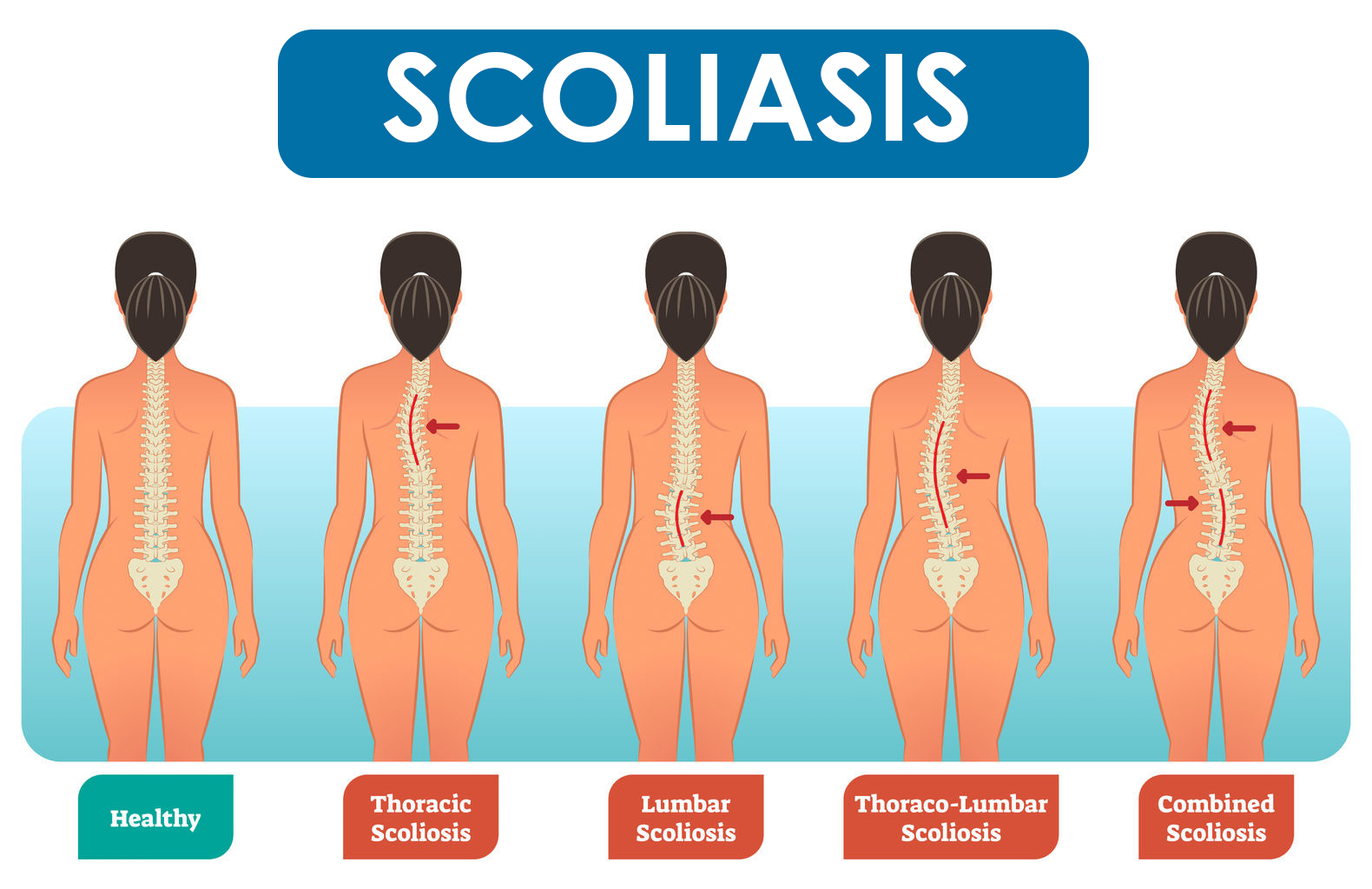
What Is Scoliosis?
Scoliosis is a sideways curve in your backbone (spine). The angle of the curve may be small, large, or somewhere in between. But anything that measures more than 10 degrees on an X-ray is considered scoliosis. Doctors may use the letters “C” and “S” to describe the curve.

Scoliosis Symptoms
If you have scoliosis, you might lean a little when you stand. You could also have:
- A visible curve in your back
- Uneven shoulders, and a waist that shifts to the side
- One shoulder blade that looks bigger
- Ribs that stick out farther on one side of your body than the other
- One hip appearing higher than the other or one leg longer than the otherAlong with visible symptoms, scoliosis may lead to:
- Low back pain
- Back stiffness
- Pain and numbness in your legs (from pinched nerves)
- Fatigue due to muscle strain
- A hard time breathing because of an upper spine (thoracic) curve.
Scoliosis pain
Teenagers who get scoliosis typically don’t feel any pain. If your teen has severe back pain or numbness, a doctor needs to rule out other causes of the pain. Adults age 40 or older who have untreated scoliosis may start to feel pain as the disks in their back break down.
Scoliosis Types
Idiopathic scoliosis
This is scoliosis without a known cause and is the most common type. In as many as 80% of scoliosis cases, doctors don’t find out the exact reason for the curved spine. Idiopathic scoliosis is the diagnosis made when the other types have been ruled out.
Congenital scoliosis
This begins as a baby’s back develops before birth. Problems with the tiny bones in the back, called vertebrae, can cause the spine to curve. The vertebrae may be incomplete or fail to divide properly because one area of the spinal column lengthens more slowly than the rest. Doctors usually spot this rare condition when the child is born. But they may not find it until the teen years.
Neuromuscular scoliosis
This is caused by a disorder like spina bifida, cerebral palsy, or a spinal cord injury. These conditions sometimes damage your muscles so they don’t support your spine correctly. That can cause your back to curve.

